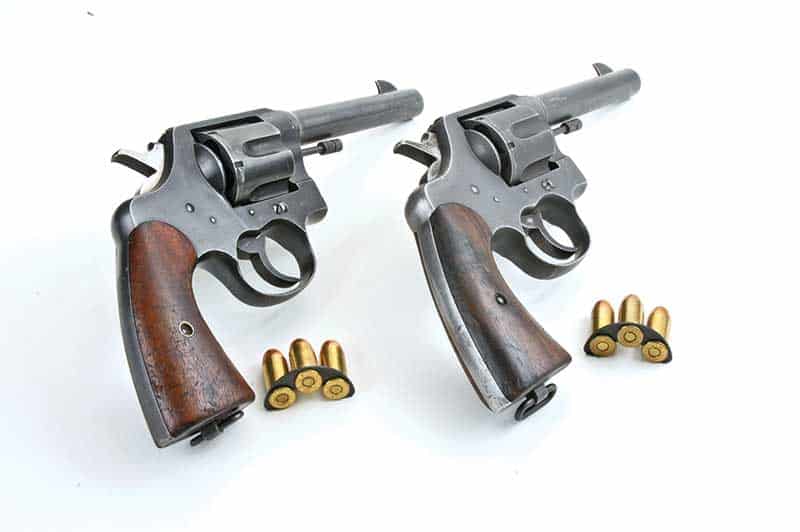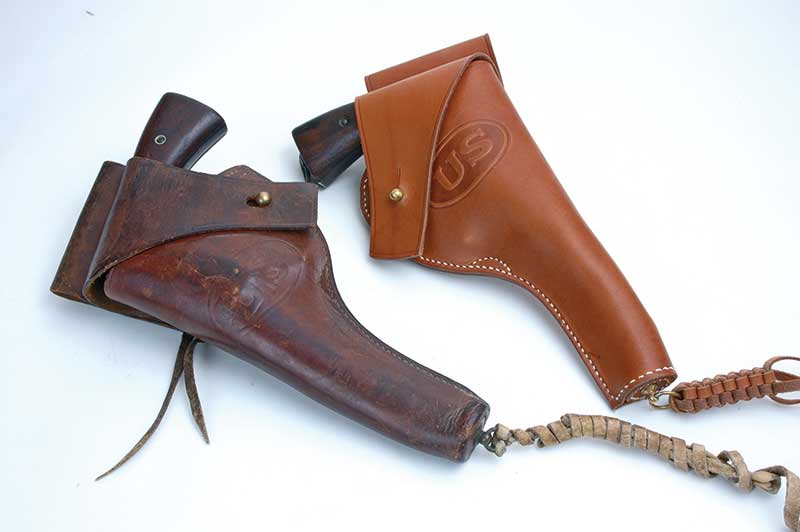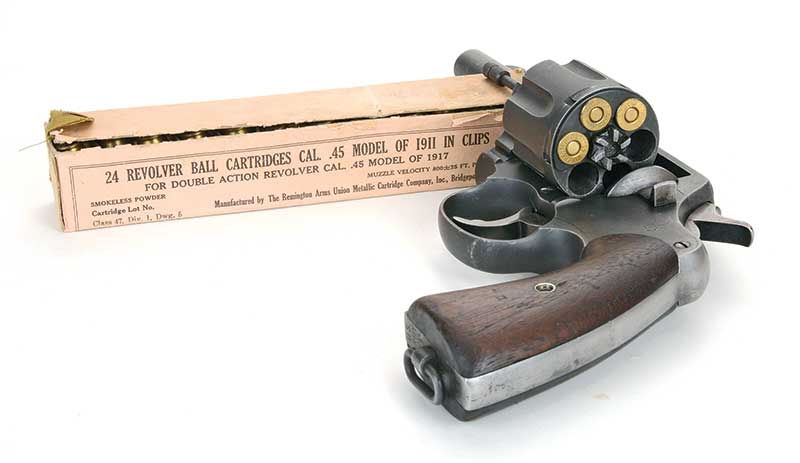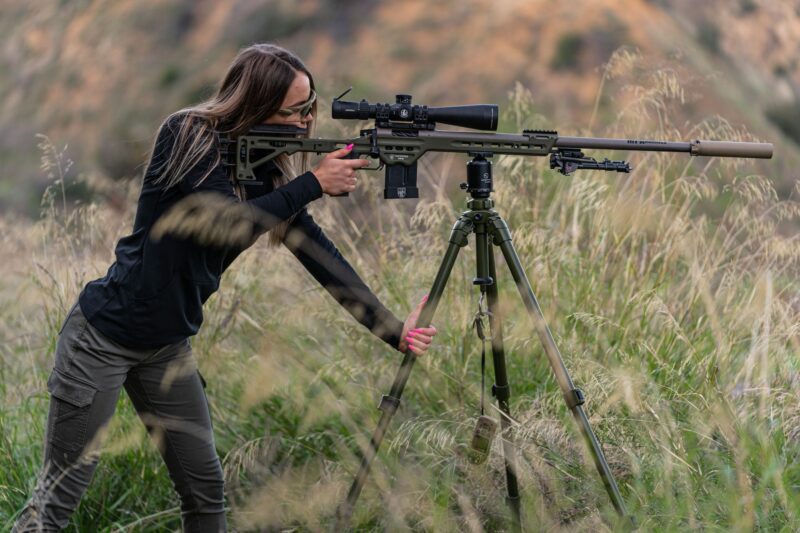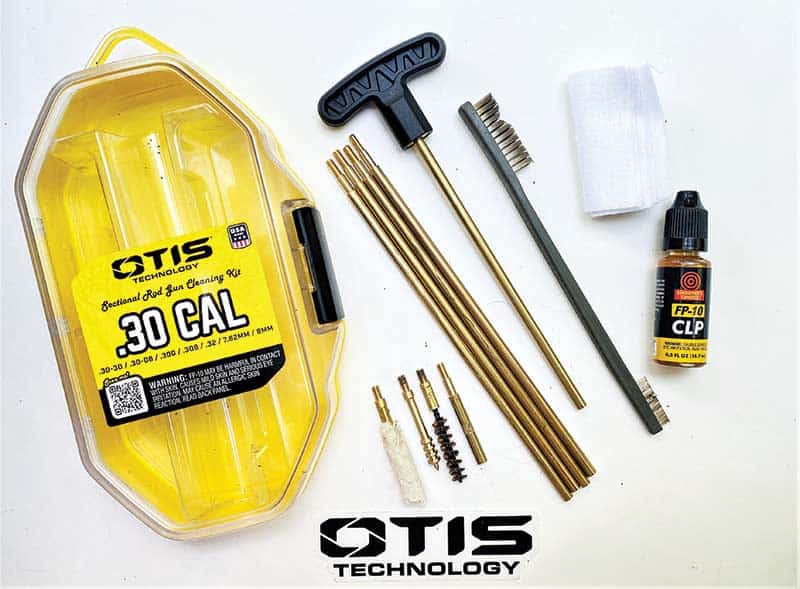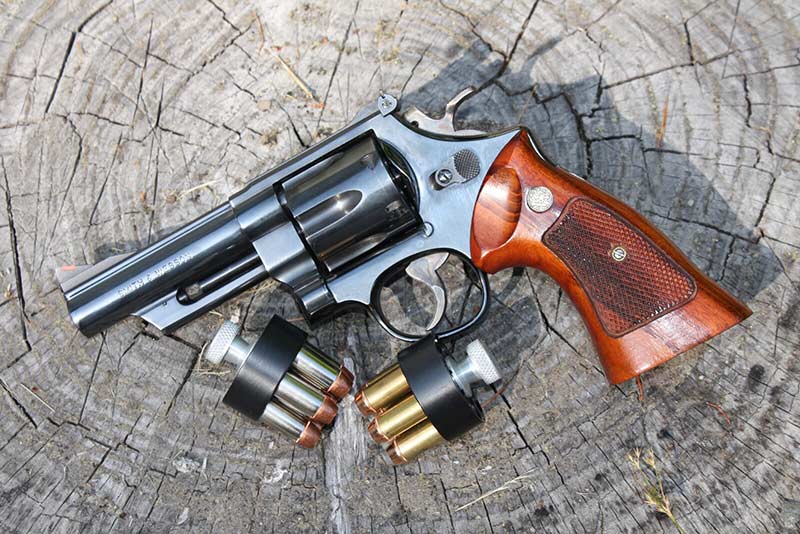Colt US Model 1917 .45
An ingenious solution to a handgun shortage.
When countries can’t supply the number of weapons needed by their armed forces for the wars in which they engage, most must resort to buying them from other countries. America has never had that problem. Besides having a robust firearms industry, it has also been an ingenuous one. A prime example of that would be in the manner by which the shortage of 1911 .45 Auto handguns for the US Army in World War I was satisfied.
Back then, the premier American handgun manufacturers were Smith & Wesson and Colt. Both were set up to make large-bore revolvers, including .45 caliber ones. However, that .45 caliber was the .45 Colt, which used a rimmed cartridge case, as had all revolver chamberings up to that time. The US military’s standard .45 Auto handgun cartridge was designed around a rimless case, so there was no flange on it to provide a surface for extractors to push against when ejecting fired cases.
Therefore some bright thinker at S&W, whose name has been long lost to history, came up with the idea of “half-moon” clips. These were simply stamped out pieces of steel, each holding three rounds of .45 ACP. The clips’ arms slipped into the extractor groove of the rimless cases, holding them solidly. So solidly, in fact, that the empty cases are a pain to remove if you want to reload them—a factor of no consequence whatsoever to the military. (These 3-round clips also were the first revolver speed loaders.)
Colt’s large-frame revolver at that time was named the New Service. First introduced in 1899, the New Service had actually already served as an official US Army sidearm. That was the Model 1909 for which a special version of .45 Colt ammunition was also issued. It differed in having a wider diameter rim than commercial .45 Colt loads so as to insure case extraction. For the commercial market Colt sold New Service revolvers with 4-1/2″, 5-1/2″ and 7-1/2″ barrel lengths. Grips were checkered hard rubber and finish was the highly polished blue so typical of that era. Also typical were very crude sights consisting of no more than a blade-front silver soldered on the barrel and a thin groove down the revolver’s topstrap for rear sight. Also standard on New Service commercial revolvers was a lanyard ring on the gun butt.
In essence the New Service was already a military revolver just waiting for more service. The changes needed by the US Government to turn Colt’s big commercial sixgun into the US Model 1917 were few. Checkered hard-rubber grips were replaced with smooth walnut ones. The shiny commercial blue was dispensed with in favor of a dull blue finish. For barrels, only the 5-1/2″ length was used on US Model 1917s. They were stamped “U.S. Army Model 1917” on the butt and “United States Property” under the barrel along with an inspector’s mark at the top left rear of the frame.
Sources vary to exact numbers, but Colt furnished more than 150,000 to the US Government in 14 months between October 1917 and December 1918. With about 355,000 Colt New Service revolvers made between 1899 and 1944, the government’s purchase of US Model 1917s amounts to over 40 percent of the total.
The M1917’s service didn’t end with World War I. According to Bruce Canfield’s U.S. Infantry Weapons Of World War II, over 96,000 surviving Colt ’17s were kept in government hands between the world wars. Many thousands of those were pulled from storage and issued again in World War II. A sure way to discern if a Colt US Model 1917 was used again in WWII is if it now has the phosphate finish we commonly call Parkerizing instead of the original blue finish. Whenever possible, frontline unit members who were issued handguns received 1911s. The .45 ACP military revolvers mostly saw secondary service in the hands of MPs, POW Camp guards, etc. Still plenty of photos exist of combat troops in both the Pacific and European Theaters of Operations with Colt US Model 1917s in their holsters and/or hands. American troops are nothing if not good scroungers.
I’ve managed to land a sample of both blue and phosphate finished Colt US Model 1917s for my collection. Both are fine shooters and, to my constant pleasure, both place their bullets directly at their fixed sights’, point of aim at 50′, when fired single-action standing, with a 1-hand hold. However, I must admit I can hardly hit a barn door with any New Service revolver when firing double action.
For handloads, I almost always rely on either 5 grains of Bullseye or 5.4 grains of HP38 under either 230-grain Oregon Trail commercially cast bullets or 220-grain home poured ones from Lyman mould 452374. Velocities for both loads are right about 800 fps. Military surplus .45 ACP loads dated 1966 give about 840 fps.
Along the way at a gun show I found an original WWI ammo box issued specifically for the 1917 revolvers. It held 24 rounds of .45 Auto already loaded in the 3-round “half-moon” clips. Also found was one of the Model 1909 leather holsters issued during WWI. They are simple to discern because they are meant for the old cavalry reverse draw, i.e. worn on right side with butt forward. WWII holsters for the same revolvers were still meant for right-side carry but with butt rearward. I’ve only found a replica of one of those.
The Colt US Model 1917s and accouterments that I’ve gathered are perhaps a view into my personality. I say I’m searching for more to learn and Yvonne says I’m searching for more to buy.
